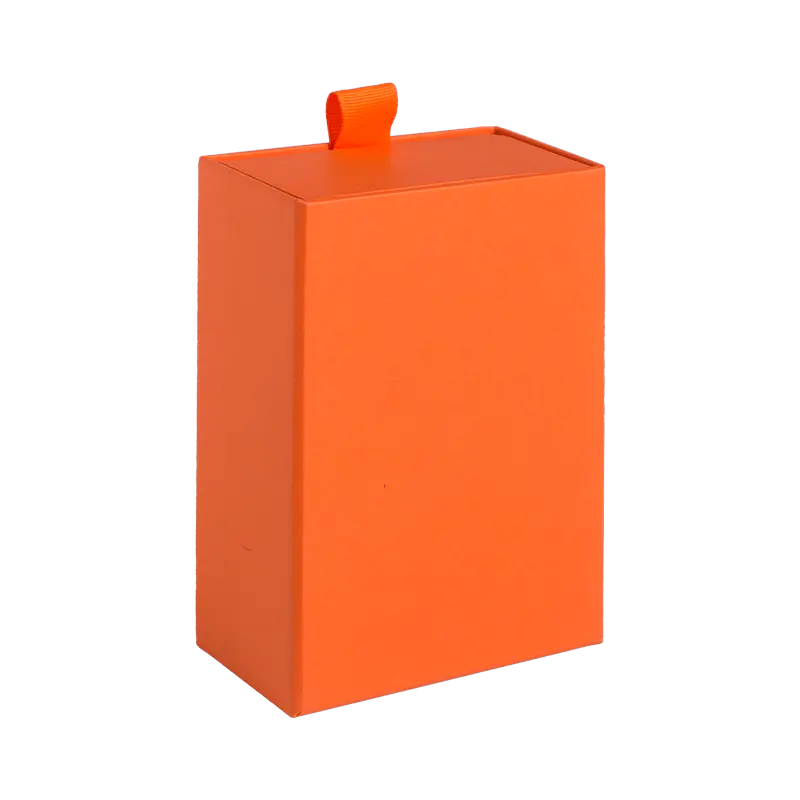The design and production of
clothing packaging gift boxes is not only to be beautiful and attract consumers, but more importantly to ensure that the clothing is not damaged during transportation, storage and display.
1. Design stage
Material selection: Choose strong and durable materials such as cardboard, wood, or metal to ensure that the
gift box can withstand external impacts and crushing. Consider using waterproof, moisture-resistant materials, such as cardboard or plastic linings with a waterproof coating, to protect clothing from wet conditions. Choose eco-friendly materials such as recyclable cardboard or biodegradable plastics to reduce your environmental impact.
Structural design: Properly designed internal structures, such as dividers, grooves or padding, to hold the garment in place and prevent it from sliding or shifting during transportation. The corners and edges of gift boxes should be designed to be rounded or have cushioning materials to reduce damage to clothing in the event of collision. Consider adding closure methods such as locks, zippers or adhesive tapes to ensure that the gift box fits tightly when closed and prevents clothing from falling out during transportation.
Visual design: Use eye-catching colors and patterns to make the gift box attract consumers' attention when displayed. Mark warnings such as "fragile" or "please handle with care" on the gift boxes to remind transporters to handle them with care.
2. Production stage
Accurate measurement: Before making, accurately measure the clothing to ensure that the size of the gift box matches the clothing to avoid being too large or too small, causing the clothing to shake or be squeezed in the gift box. Consider the folding and placement of clothing and design a reasonable internal space layout.
Fine processing: Use high-precision cutting and folding processes to ensure that the corners and edges of the
gift box are smooth and burr-free to avoid scratching clothing. Add cushioning materials such as foam, sponge or bubble wrap where needed to add protection to your clothing.
Quality inspection: Check whether the materials used in gift boxes meet predetermined quality standards, including the texture, hardness, thickness, etc. of the paper. For waterproof and moisture-proof materials with special requirements, special tests are required, such as immersion test, humidity test, etc. Check whether the materials meet environmental protection requirements, including the recyclability of the materials and whether they contain harmful substances. Check whether the structural design of the gift box is reasonable and whether it can effectively fix and protect the clothes. In particular, internal dividers, grooves or padding need to be positioned and sized to fit snugly around the garment. Check whether the gift box is clearly marked with warnings such as "fragile" or "please handle with care", as well as necessary product information and brand identification.
Packaging and transportation: Before placing the
clothes in the gift box, clean and organize the clothes to ensure that they are free of stains and damage. Use soft wrapping paper or plastic bags to wrap the clothes before placing them in the gift box to reduce friction between the clothes and the gift box. Add additional packaging materials, such as bubble wrap or foam board, to the outside of the gift box to increase the pressure resistance and shock resistance of the overall packaging. Choose reliable shipping methods and partners to ensure your clothing is properly protected during transportation.
After-sales service:
Provide comprehensive after-sales services, such as return and exchange policies, repair services, etc., to deal with clothing damage caused by improper packaging. Collect customer feedback to continuously improve and optimize the design and production process of packaging gift boxes to improve the effectiveness of protecting clothing.
Clothing packaging gift boxes should fully consider their function of protecting clothing during the design and production process. Through measures such as selecting appropriate materials, well-designed structures, precise measurement and fine processing, and comprehensive after-sales service, we can ensure that clothing is not damaged during transportation, storage, and display.


